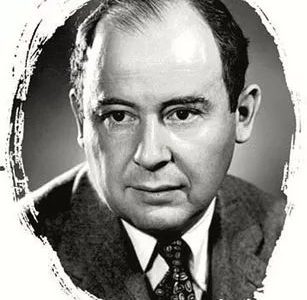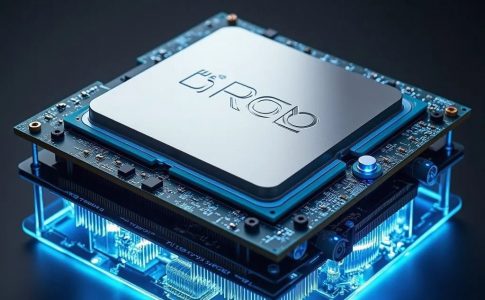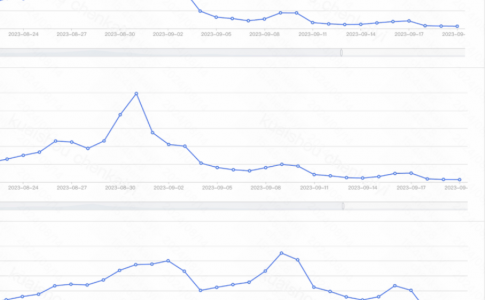In the vast and ever-evolving cosmos of computer technology, books have always been my essential guiding stars in exploration. Looking back on my journey of learning and growth, several computer books stand out like brilliant pearls, deeply embedded in the river of my memory. They have not only nourished me with professional knowledge but also opened the door to a deeper understanding of the diverse world of computer science. Today, I would like to share these extraordinary computer books with you, as well as my thoughts, insights, and unique experiences from reading them.
01 Computer Science Fundamentals—Computer Systems: A Programmer’s Perspective
This book provides a detailed explanation of the fundamental concepts of computer systems from a programmer’s perspective and demonstrates how these concepts truly affect the correctness, performance, and usability of applications. With 12 chapters, it covers various aspects of computer systems, ranging from the basic representation and processing of information to machine-level representation of programs, processor architecture, memory hierarchy, linking, exception control flow, virtual memory, system-level I/O, network programming, concurrent programming, and more. It integrates software and hardware theories to help readers build a comprehensive understanding of computer systems. The book offers numerous examples and exercises, with answers to some of them, which aids readers in deepening their understanding. It is suitable for undergraduate students in computer science and related fields as a textbook for systematically learning computer system knowledge. It is also a valuable reference for programmers and computer researchers who wish to gain a deeper understanding of the underlying principles of computers, enhance their programming skills, and improve their problem-solving abilities.
02 Computer Organization and Design—Structure and Interpretation of Computer Programs
This book covers ideas on programming and controlling system complexity, including data abstraction, procedural abstraction, iteration, higher-order functions, data structures and algorithms, compilers/interpreters, and programming language design. It emphasizes solving problems through the construction of procedural and data abstractions, helping readers understand how to break down complex problems into simpler, manageable parts. This cultivates readers’ abstract thinking and modular programming skills, which are crucial for developing large and complex software systems. The book includes a wealth of example code and exercises. These examples and exercises not only help readers understand the practical application of abstract concepts but also enable them to deepen their knowledge and improve their programming skills through practice.
As one of the introductory textbooks for the computer science program at MIT, it is highly suitable for undergraduate students in computer science and related fields. It can lay a solid foundation in computer science for them, helping them build a systematic programming mindset and theoretical framework. Even experienced professional programmers can gain new insights and benefits from this book. The in-depth exploration of programming ideas and methods, as well as the analysis of programming language implementation principles, can help programmers better understand and apply various programming techniques, write more efficient and high-quality code, and enhance their ability to solve complex problems.
03 Algorithms and Data Structures—Introduction to Algorithms
This book provides a comprehensive discussion of algorithms, covering fundamental knowledge, sorting and order statistics, data structures, algorithm design and analysis techniques, advanced data structures, graph algorithms, selected algorithm problems, and mathematical foundations. It integrates rigor and comprehensiveness, offering an in-depth exploration of various algorithms that cover almost all important topics in the field of computer algorithms. The book includes a large number of examples, exercises, and thought-provoking questions, which help readers combine theoretical knowledge with practical application, deepen their understanding of algorithms, and enhance their ability to solve real-world problems.
As a classic textbook for undergraduate and graduate students in computer science and technology, software engineering, and related fields, it can provide students with a solid foundation in algorithms, helping them understand the principles and design methods of algorithms and improve their ability to analyze and implement algorithms. This book supports their subsequent professional studies and research. In practical programming work, algorithms are ubiquitous. Reading Introduction to Algorithms can enable programmers to better understand and apply various algorithms, improve the efficiency and performance of their programs, solve complex programming problems, and enhance their programming skills and competitiveness.
04 Mathematics—Concrete Mathematics
This book introduces the mathematical foundations of computer science, covering topics such as summation, floor and ceiling functions, number theory, binomial coefficients, special numbers, generating functions, discrete probability, and asymptotics. It is aimed at professionals working in computer science, computational mathematics, and computational technology, as well as teachers and students in related majors at higher education institutions. The book contains over 500 exercises divided into six categories, with solutions provided for all exercises. This helps readers deepen their understanding of the content and enhance their ability to solve practical problems.
As a textbook or reference book for undergraduate and graduate students in computer science-related fields, it can help them build a solid mathematical foundation and improve their ability to apply mathematical knowledge to solve computer science problems. This book provides strong support for subsequent courses such as data structures, algorithm design, and programming languages. In practical programming work, many problems require the application of mathematical knowledge for optimization and solutions. Reading Concrete Mathematics can enable programmers to better understand algorithm complexity analysis and the design principles of data structures, thereby writing more efficient and high-quality code.
These books are published by People’s Posts and Telecommunications Press and Machinery Industry Press (also known as the so-called black cover series). The recommended reading order is CSAPP -> SICP -> Introduction to Algorithms -> Concrete Mathematics, with the difficulty level increasing progressively. Even if you read them casually like browsing Wikipedia, you will gain a better understanding of how computers work after finishing them.
05 Database Principles—MySQL: A Beginner’s Guide
MySQL is one of the most popular database management systems in the world. The book starts with simple data retrieval and gradually delves into more complex topics, including the use of joins, subqueries, conditional expressions, full-text search, stored procedures, cursors, triggers, table constraints, and more. Through well-organized chapters with clear and concise explanations, the book systematically and succinctly presents the knowledge that readers should master, significantly enhancing their skills almost effortlessly.
For those who are new to programming and wish to learn database knowledge, this book is an excellent entry-level choice. It introduces the basic concepts and operations of MySQL in a straightforward manner, without requiring extensive theoretical knowledge or prerequisites. By studying this book, beginners can quickly grasp how to create databases and tables, as well as perform basic data retrieval, insertion, updating, and deletion operations.
06 Computer Networks—Computer Networking: A Top-Down Approach
This book adopts a top-down approach, starting with the application layer to introduce network applications such as web applications, email, and file transfer. This method allows readers to quickly understand the practical uses of computer networks in everyday life, as the application layer is the part that users directly interact with, which can stimulate their interest in learning. The book then gradually moves on to the transport layer, network layer, link layer, and physical layer. When explaining each layer, it clarifies how that layer provides services to the upper layers and interfaces with the lower layers, helping readers clearly establish the concept of the hierarchical architecture of computer networks.
As a textbook for majors such as computer science and technology, network engineering, and communication engineering, it is highly suitable for undergraduate students studying computer networking courses. This top-down approach aligns with students’ cognitive habits and helps them systematically build a knowledge system of computer networks. Whether you are working in other IT fields or are an enthusiast curious about network technology, reading this book can help you easily enter the field of computer networks, understand the basic principles and practical applications of computer networks, and keep pace with the rapid development of information technology.
07 C++ Programming Language—C++ Primer (5th Edition)
A classic C++ tutorial, C++ Primer (5th Edition) has rewritten all examples in accordance with the C++11 standard. It is suitable for beginners to get started or for intermediate and advanced programmers to enhance their skills. The book covers four parts: C++ language fundamentals, the C++ Standard Library, tools for class designers, and advanced topics, with a total of 19 chapters. It begins with basic content such as variables, data types, expressions, and statements, and gradually moves on to advanced features such as object-oriented programming, templates and generic programming, dynamic memory management, and finally introduces special tools and techniques like file input/output and multithreading, building a complete C++ knowledge system for readers.
For readers who have no C++ background but have some programming experience (such as those who have learned C, Java, Python, or other programming languages), this book is an excellent introductory textbook. It can help beginners systematically learn the basic knowledge and programming skills of C++, establish a comprehensive understanding of C++, and lay a solid foundation for further learning and practice. Even intermediate and advanced programmers can use this book as a reference manual to look up when encountering problems or needing to delve deeper into specific knowledge. The in-depth analysis and comprehensive coverage of the C++ language in the book can help them solve various difficulties in practical development, broaden their programming, and improve their technical level.
08 Linux Underlying Skills—Deep Understanding of Linux Processes and Memory
The book is organized into 16 chapters, with rich content but clear logic. The logical order of the chapters is reasonable, guiding readers from basic knowledge to advanced topics step by step, in line with the laws of learning. For example, it first introduces the basic concepts of the Linux system and the basics of processes, and then delves into memory management and process scheduling, allowing readers to gradually grasp the knowledge. The content of each chapter is carefully organized. It usually starts with some practical problems or application scenarios to provoke readers’ thinking, then gradually explains the related





No comments